Behind Glass: (Majority) White Newborns in Life-Saving Baby Incubators
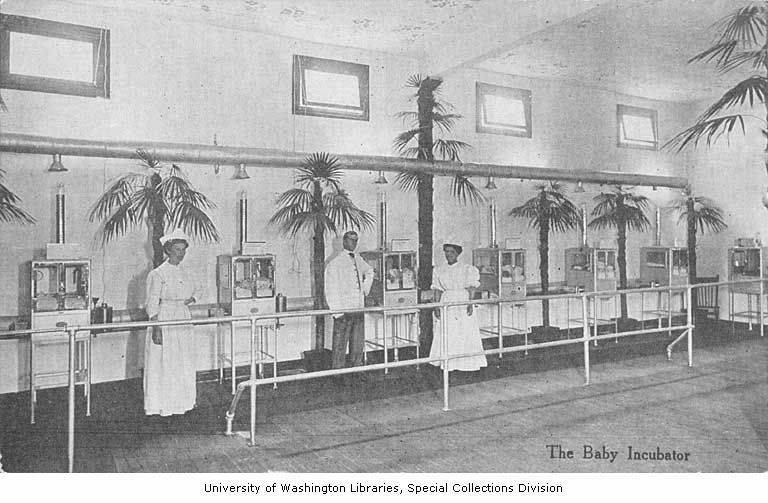
An official exposition photographic postcard depicting the interior of the baby incubator exhibit at the AYP Expo. Printed on the back of the postcard: "78. The Baby Incubator. In no other way does science enlist our interest and sympathy so much as in its assistance in saving infant life. Within these 'machines' are seven little pre-maturely born infants."
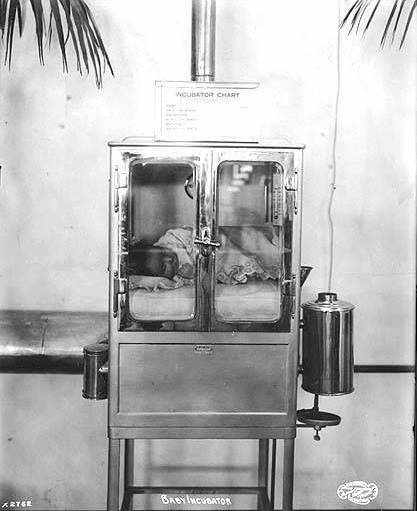
A photographic closeup of a baby in a baby incubator at the AYP Expo.
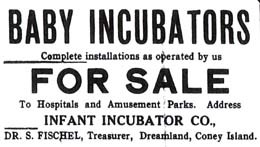
A newspaper ad selling baby incubators to hospitals and sideshows alike.
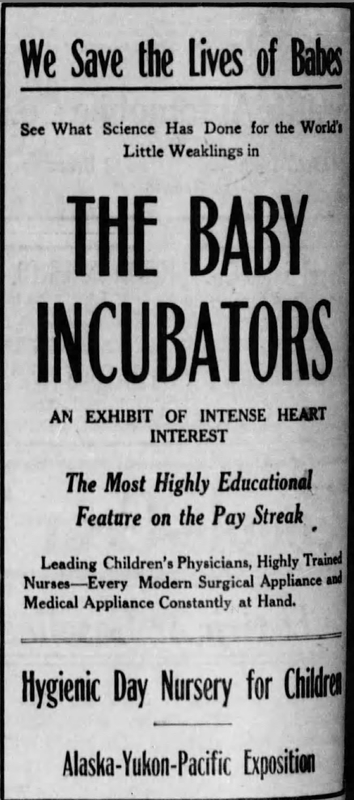
Newspaper ad in which the Baby Incubator exhibit at the AYP Expo is advertised as "educational" and life-saving.
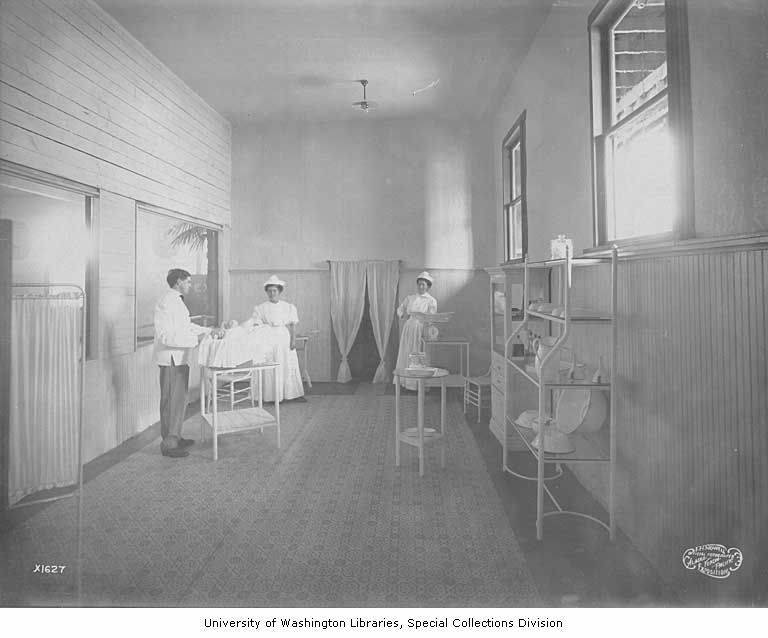
Photograph of a few nurses and a baby in an exam room as part of the Baby Incubator exhibit at the AYP Expo.
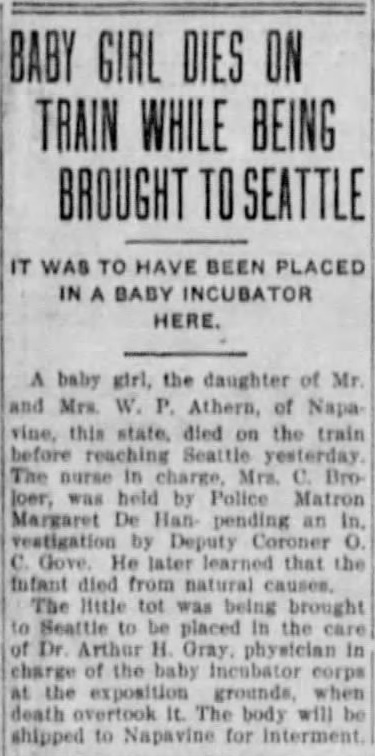
Newspaper article about a premature baby that died on her way to the Infant Incubator exhibit at the AYP Expo. The parents had hoped that the exhibit could save her, but they arrived too late.
The AYP Expo made babies a prominent part of the fair, exhibiting them at the Baby Incubator Exhibit and throughout the different midway exhibitions of ethnic communities. They even went so far as to raffle off Ernest, a one-month old orphaned child (although there was a winning ticket, it was never claimed—leaving Ernest’s fate a mystery to the present day).
Why was this displayal of babies so popular? The culture of scientific curiosity at the time encouraged people to view the young infants. Though such contact may have been detrimental to our modern view of health, incubation was at that time a little-known idea. The doctors and scientists who worked on the devices felt that this was one way to bring the needs of premature babies to the forefront. It was also argued that these exhibits saved lives—the vast majority of babies on display survived in a time when the survival rate of premature infants was nearly zero. Babies were often obtained not only through the referral of doctors but from desperate parents, hoping for answers in a time when premature birth wasn't recognized as a treatable condition.
But, questions of morality arose: Was the medical treatment worth sacrificing children to the public eye? How genuine was the scientific curiosity of spectators? Could scientists have gotten the funding to continue treating premature children without this kind of exposure? These questions are acknowledged in a 1905 book on the subject:
"The feeling of the medical profession is against the show incubators, of this there can be no doubt. On the one hand there is a prejudice that showmen can not have the proper sentiment toward these little ones and may sacrifice proper requirements of care for show purposes on the other hand, we feel it degrading to human sentiment to make an exhibition of human misfortunes, especially in the shape of tiny infants. It is perfectly rational, then, to inquire into the advantages that an incubator institute has to offer. In the first place, such an institution, when connected with a large Fair or Exposition is financially able to give these young infants attention which could not be procured otherwise. When it is recalled that each infant at the St. Louis Fair cost the company about $15 a day, the magnitude of the task is apparent, and if this expenditure is life-saving it would be a great boon to the poorer class. Money is necessary to save the life of premature infants. It is questionable whether any hospital or asylum could undertake this work unless the State would give a liberal support"(Zahorsky 12–13).